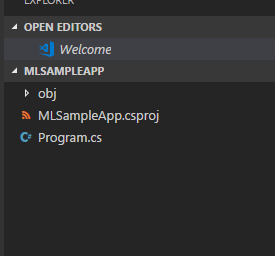Machine Learning for .NET Developers
What Is Machine Learning?
You might have some basic idea about Machine Learning. Machine learning (ML) is a sub field of artificial intelligence (AI). In Machine Learning software is able to learn from data without being explicitly programmed. Rather than writing code for every possible scenario, you give the machine data, and allow it to find patterns in that data. A common example of ML is Netflix recommendations system which displays shows you might watch next or the email spam filters.
At its core, Machine Learning is the process of training a model that makes predictions or decisions. Once trained, this model can be deployed to solve real-world problems like image recognition, fraud detection or weather forecasting.
Machine Learning Options in Microsoft’s Ecosystem
For Machine learning, Microsoft offers a rich ecosystem. You might have hear dof Azure Machine Learning, which is Azure based platform for building, deploying, and managing ML models. Azure also provides Cognitive Services, which is a suite of prebuilt APIs for tasks like language understanding, vision, and speech. Azure Machine Learning require Python skills or deep knowledge of data science.
ML.NET is a open source framework designed specifically for .NET developers who want to integrate ML into their applications using the C# and F#. There’s not that steep learning curve for .NET developers compared to other platforms.
Why ML.NET Matters for .NET Developers
As .NET developers we don’t need to learn and use programming languages such as Python or use new libraries. ML.NET is fully integrated into the .NET ecosystem, which means we can work seamlessly with our existing tools, projects, and codebases.
ML.NET is a production-ready framework used by companies to solve real-world problems. ML.NET can be used for different Machine Learning tasks such as recommendation systems, detecting anomalies, or adding sentiment analysis.
Key Features of ML.NET
Here are some of the important features of ML.NET:
- AutoML: Automatically finds the best ML model for your data with minimal effort.
- Custom ML Models: Build models tailored to your business needs.
- Cross-Platform: Works on Windows, Linux, and macOS.
- Integration with .NET: Use your favorite .NET languages like C# or F#.
- ONNX Support: Load and run pre-trained models from other ML frameworks like TensorFlow.
- Data Processing: Includes tools for data transformation, feature engineering, and normalization.
- Scalability: Deploy models to cloud, on-premises, or even IoT devices.
Real-World Use Cases
ML.NET allows .NET developers to implement various machine learning tasks in our applications. Here are some practical use cases:
- Sentiment Analysis: Determine whether customer feedback is positive, negative, or neutral.
- Fraud Detection: Identify suspicious transactions in financial systems.
- Recommendation Systems: Suggest products or content to users based on their preferences.
- Anomaly Detection: Monitor system performance and detect unusual behaviors.
- Image Classification: Classify images for tasks like quality control or facial recognition.
- Predictive Maintenance: Anticipate equipment failures before they happen.
How ML.NET Works
ML.NET has a pipeline-based architecture.This mean we need to stack components like data loading, transformations, and algorithms to create a workflow. This makes it simple to use and is yet powerful to create real world applications.
- NuGet Packages: For integrating ML.NET functionality in our application we Start with
Microsoft.MLfor the core library. For deep learning we can addMicrosoft.ML.TensorFloworMicrosoft.ML.OnnxRuntime. - Model Builder: This is a visual tool inside Visual Studio which walks you through building ML models step by step even without writing any code.
- CLI: Finally if you prefer command line the you can use ML.NET CLI for generating the code quickly.
Now let’s look into the workflow we need to use while working with ML.NET
- Load Data: You start by loading your dataset, which can come from a file, a database, or even an in-memory collection.
- Define a Pipeline: This is where you specify data transformations (like normalizing values) and the type of ML task (e.g., classification or regression).
- Train the Model: ML.NET takes your data and pipeline, then trains a model by finding patterns in the data.
- Evaluate the Model: Before deploying, you evaluate the model’s accuracy using metrics like precision, recall, or mean squared error.
- Make Predictions: Once trained and tested, the model is ready to make predictions on new, unseen data.
- Deploy: Finally, you integrate the trained model into your application and deploy it to production.
As you can realize ML.NET abstracts much of the complexity allowing us to focus on solving problems rather than directly work with ML algorithms.
So as we have seen with ML.NET, we can leverage our existing .NET skills to build intelligent ML applications.
Follow on:
